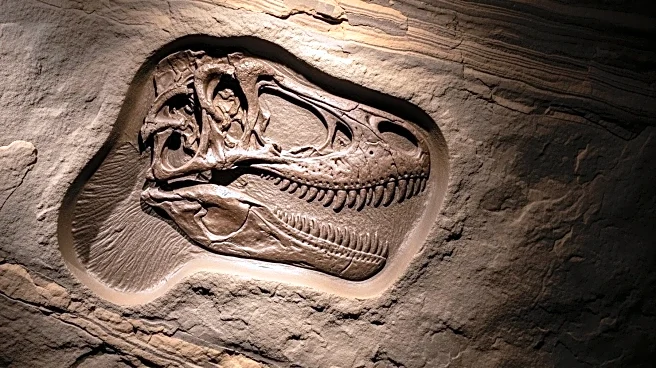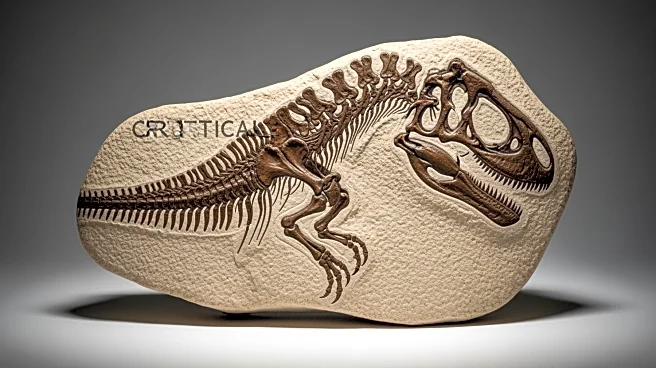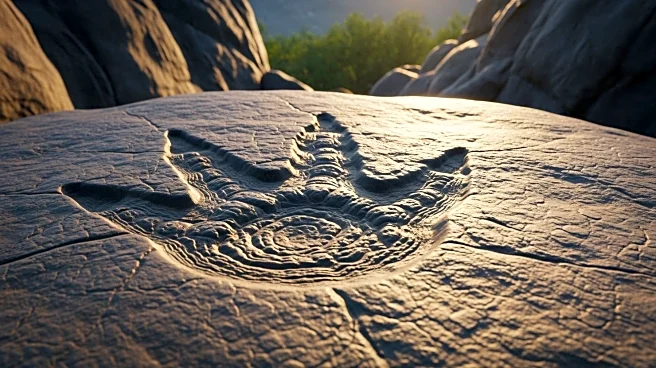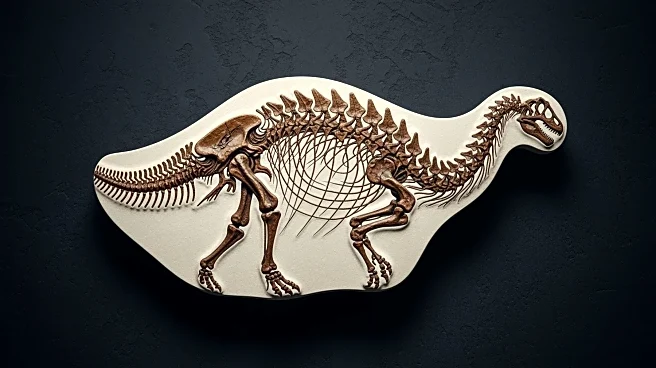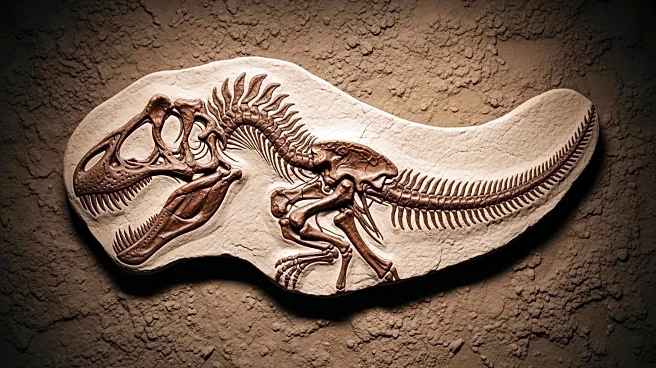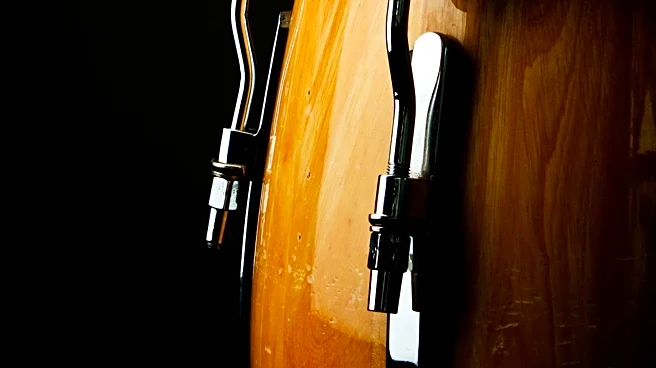What's Happening?
A team of Argentinian scientists has uncovered the nearly complete skeleton of a dinosaur species, Huayracursor jaguensis, in the Andes Mountains. The fossil, found at an altitude of 3,000 meters, includes
parts of the skull, a complete vertebral column, and nearly intact limbs. This discovery, published in Nature magazine, dates the species to between 230 and 225 million years ago, making it one of the oldest known dinosaurs. The Huayracursor jaguensis, a small long-necked herbivore, lived during the Triassic period, a time when the first dinosaurs and mammalian ancestors began to emerge.
Why It's Important?
This discovery is significant for paleontology and evolutionary studies, as it provides insights into the early development of dinosaurs. The Huayracursor jaguensis adds to the understanding of dinosaur evolution and diversity during the Triassic period. The find also highlights the rich paleontological potential of the Andes region, which could lead to further discoveries. For the scientific community, this fossil offers a rare glimpse into the past, potentially reshaping theories about dinosaur lineage and adaptation.
